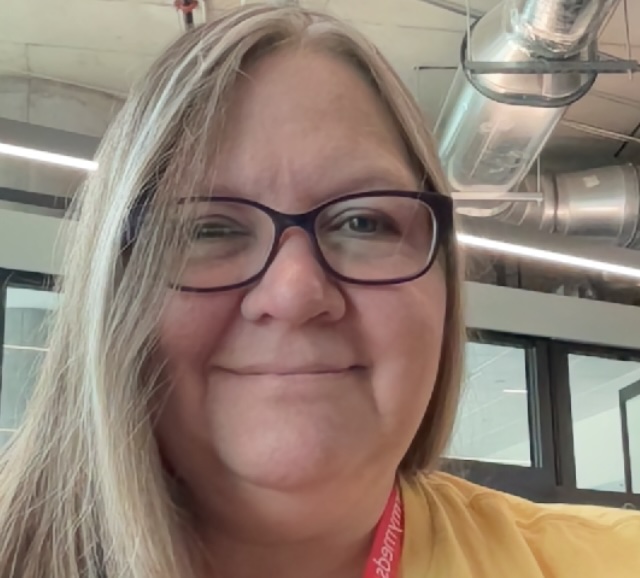Launch Planning

9 Key Questions
According to the latest PMA report on product launches, 70% of surveyed businesses recognize the significant revenue impact of product launches, but fewer than 34% of businesses have a formalized, repeatable launch plan. They can be difficult to get your arms around, and it might seem that the last thing you have time for is the extra time and energy it will take to create a launch plan; but without it, you don't have a strategy, you have wishful thinking. And you will spend significantly more time and energy chasing down every part of the launch without a plan, even if you need to modify that plan (and you will).
Launch plans can be developed from 9 key pieces of information, each of which requires research and/or solid current strategy and backing data. If you've already built out an overall Got To Market Strategy and stick to it, then launch planning becomes much easier, faster, and more effective.
- 1. Product Overview: A brief description of your SaaS product, including the main features and the unique value proposition it offers to payroll managers, HR executives, and advertisers.
- 2. Target Audience: Information about the primary users (payroll managers and HR executives) and the secondary audience (advertisers). This includes any insights you have into their needs, preferences, and challenges.
- 3. Market Context: A brief overview of the market situation, including any trends that support the need for your product, and a high-level view of the competitive landscape.
- 4. Business/Pricing Model: How you plan to generate revenue, specifically the nature of the advertising model, and if there are any other revenue streams (e.g., premium features, subscriptions).
- 5. Key Objectives: What are the main goals for the launch? This could include user acquisition targets, revenue goals, market penetration rates, etc.
- 6. Budget Overview: A rough budget for the launch, including how much you are planning to allocate to development, marketing, sales, and other key areas.
- 7. Timeline: Any specific deadlines or milestones you are aiming for, including when you plan to start the launch and how long the initial launch phase is expected to be.
- 8. Available Resources: Information on the resources you have available for the launch, including team size/skills, technology tools, and any partnerships or external agencies you plan to use.
- 9. Challenges and Concerns: Any specific challenges or concerns you have about the launch that need to be addressed in the plan.
The Questions, Answered

The Critical Intermediate Step of Launch Planning
A launch plan built for a real SaaS HR benefits product managed by PaydayPERX helps illustrate the intermediate step necessary to properly allocate time and budget. These answers aren't the plan, but they lead to the action plan itself and will greatly help in identifying where things are more likely to break.
- 1. Product Overview: The SaaS product manifests on employer online payroll sites as a small icon that will be styled to blend in with the employer's existing payroll, and which will take the employee to a separate secure site where they can browse voluntary benefits like additional short term and long term disability insurance, legal aid, fitness programs, credit cards and financial planning products, within a frame that includes sponsored advertiser ad content for consumables like food, oil changes, movie tickets etc, other consumer products and services. Employees interact with these services independently as they see fit.
- 2. Target Audience: The target audience is primarily medium-sized (100 - 500 employee) businesses who want to offer higher-end benefits to employees but don't have the HR staff internally to manage and promote them. The product might appeal to larger companies, and the more eyeballs the better for employers, but larger companies are more likely to already have a solution for this, and small ones don't expect it, we're aiming for the gap in between.
- 3. Market Context: The HR and Payroll space is full of the advertisers who want to reach employees, and employees want better and more benefits at little or lower cost than buying as individuals, but the market lacks products like this that directly facilitate that reach. There are a few 'employee perks' companies and products that are more focused on employee rewards and incentives, and 'kudos' platforms like Ignite, but no head-to-head competition for traditional benefits tied to a free independent platform paid by advertising.
- 4. Business Model: Advertisers will pay a rate based on the size and length of their buy, the size of their ad, and the amount of specific targeting they want to do, for instance, Subway may want everyone but a loan services product may only want employees with a higher income or credit score. The data itself can be sold to certain advertisers, for instance H&R Block may want to send an advertising email campaign during tax season only to employees who have opted in to electronic W-2 delivery, and we can facilitate selling the data or proctoring the campaign to the audience.
- 5. Key Objectives: The objective of the launch would be wider awareness of the platform's availability to national advertisers, and the acquisition of 4 - 6 new advertiser deals, with an average value of $146,000 and sales cycle of 5-7 months.
- 6. Budget Overview: The budget will be less than $20,000.
- 7. Timeline: An actual event we are attending in 7 weeks serves as the launch event. We want to use that trade show as the launch pad as the audience attending matches our target market.
- 8. Available Resources: We can use any normal media, can design any type of promotion or digital content, and will be able to speak at an event in 9 weeks, which is the 'launch' action. So getting the attention of attendees at the event is important. Allocate $11,000 of the budget to that event effort to have a booth, speak at a breakout and sponsor an item in the bag, cover expenses, etc.
- 9. Challenges and Concerns: One challenge is in appealing to both HR Executives and Advertiser audiences at the same time. Advertisers don't mind HR content and will need to see what they're sponsoring, but HR people are severely turned off by the idea of advertisers spamming their employees. Messaging for HR must focus on benefits and questions about costs use the concept of 'sponsorship' - Ironically it's why they're at this show in the first place, because it's sponsored by all the brands that want to get in front of them. Another challenge is that the event is in just 7 weeks.
Turning the Answers into a Launch Plan

If you stop at the intermediate stage, you still have a much clearer picture of what you should be doing to support the launch of your product or service solution. But the plan is specific to tactics, and crucially it links these tactics to time. Here's where a good software platform can make all the difference; I've successfully used Monday.com and Aha.io for launch planning and project planning in general, but have repeatedly seen poor results from a reliance on generalist tools like Microsoft Planner or trying to set things up inside calendar managers. Not only do those ad hoc solutions lack necessary scoring and alert features, but they do a pooor job tying back to success KPIs and analytics.
Whatever platform or method you use to maintain and execute the plan is up to you, but its specifics will look like this:
PaydayPERX Sponsored HR Benefit Solution
Phase 1: Pre-Launch Preparation (Weeks 1-3)
Ideally most of the market strategy, segmentation, etc legwork has already been done so that most of phase 1 can focus on content, especially key demos, decks and interactive materials as well as, in this example, planning for the event.
- Product Finalization: Ensure the product is fully operational and in a sellable state, with a smooth user experience for both HR executives and employees in collaboration with product dev. Finalize integration methods for online payroll systems. Finalize all branding and key messaging for the product itself.
- Market Research & Segmentation:Identify medium-sized businesses in sectors most likely to benefit from your product. Also, segment advertiser tiers based on the targeting capabilities of your platform.
- Content and Advertising Material Development: Create engaging content that explains the benefits of your platform to HR executives and potential advertisers. Prepare demo videos or slideshows showcasing the platform's ease of use and benefits.
- Event Preparation: Plan your event presence meticulously. This includes booth design, promotional materials, and the creation of a video loop for the booth and an engaging presentation for the breakout session full of goodies like notes and live links and in a state it can be emailed to all attendees (PDF under 3 meg ideally). Ensure the promotional item for the bag is useful and branded effectively (hint - use a Microfiber cloth for low weight, low cost per piece, a big imprint area and long life). Stay within the $9k budget.
- Establish KPIs: Collaboratively develop the measurements that matter and clearly establish and agree upon what success looks like and what will be used, specifically, to measure that success. Whatever you measure is what you'll drive more of, so ensure that this is something valuable rather than a nebulous metric like social media views or new followers online.
Phase 2: Outreach and Engagement (Weeks 4-6)
Leverage some of the materials developed in Phase 1 to target specific distribution partners, customer advertisers, and media.
- Direct Marketing to HR Executives: Launch an email campaign targeting HR executives at medium-sized businesses, highlighting the benefits of offering higher-end voluntary benefits without the need for extensive HR staff.
- Engagement with Advertisers:Start outreach to potential advertisers, focusing on those who benefit from targeted access to employees, such as Subway or H&R Block. Highlight targeting capabilities and the value of reaching a captive audience.
- Media and Online Marketing: Utilize social media, industry blogs, and online forums to raise awareness. Focus content on the dual benefits of enhancing employee benefits and providing advertisers with a targeted platform. Allocate a little more than half of the remaining budget to this initiative as it is not free.
Phase 3: Event Launch (Week 7)
Ideally you'd have more time, but there's never enough time. Light that rocket!
- Event Execution: Leverage your event presence to maximize exposure. Ensure your booth is staffed with knowledgeable personnel ready to demo the product and answer questions.
- Breakout Session:Make your breakout session impactful by focusing on the unique aspects of your platform and the problem it solves in the market. Record this session (from 2 cameras/phones/whatever if possible). Use a separate audio recorder and mic if possible to get a clean audio track.
- Networking: Use the event to network with potential HR executive customers and advertisers. Salespeople should try to never eat a meal or have coffee alone or as a unit with your own employees - arrange instead to meet up with a new connection. Collect contact information for follow-up.
Phase 4: Post-Event Follow-Up and Optimization (Weeks 8-9 and beyond)
Everybody knows that events with a great attendee base can (and often do) fail in the followup. Less commonly known is that this is where launches often fail too - not in the planning, or the launch itself, but in the abandonment after the launch.
- Create Breakout Video: Post the breakout video on your site and socials as soon as you can, but edit it first to remove pauses and show important slides fullscreen. Cut between both camera angles for the better shot to keep it visually interesting. Clean up the audio and add accurate subtitles for Youtube. PROTIP: If no one on staff has these skills and you can't do it in Adobe Premiere yourself, virtually any video media agency can do it for you at a much lower cost than creating a full blown video, and if they want to keep your business they may do it at a discount.
- Post-launch Media Understanding that statistically it can take 13 or more views of an ad or native content prompt to drive a clickthough, you should have budget remaining after the event and the initial media costs (and anything you spent on your breakout video) to give an additional push in paid media, ideally driving traffic to the video which should receive a prominent place on your Youtube channel until the next launch video supercedes it.
- Structured Followup: The email campaign in Phase 2 extends into post-launch, because you knew to do that; After the launch, add a specific segment for those who also attended the event, and leverage the video as soon as it's viable.
- Performance Analysis:Evaluate the success of the launch based on initial objectives and the KPIs of Phase 1, including awareness among HR executives and deals with advertisers. Analyze budget spending against outcomes to assess ROI.
- Continuous Improvement: Based on feedback and performance analysis, continuously improve the product and its marketing. Address any HR executive concerns regarding the presence of advertising to ensure the platform remains appealing to both sides of the market.
- Sales and Marketing Adjustment: Refine sales and marketing strategies based on the insights gained during the launch phase. Focus on scaling up outreach to HR executives and securing more advertiser deals.
- The Afterparty: See what worked and what didn't; intake feedback from booth staffers, sales, executives, other attendees etc, but keep your head because the proof is in the numbers, not the opinions about the numbers. Jot down notes about anytyhing that stands out to you - a good system is the top 5 good things and top 5 bad things, then drop the bottom 2 and focus on the top 3 for next time.
No launch plan ever works out from end to end exactly as it's conceived, but that's all the more reason to create one. Seeing how reality bends and shifts things will give you critical guidance about what Customers really want - even if they say something different; it will teach you more about your distribution channels and your research than you could ever figure out on your own, too. And it will give you valuable opportunities to collaborate deeply with Product and Sales teams, because you can't lift all this yourself, nor should you want to.
Now that you have the questions, and see how to turn the answers into specific tactics, you can use the plan for your product and your tactics, which won't be the same as this; In fact, had we launched this at a different time, it would need a different plan because a lot of this one depended on that trade show as the main platform for visibility.



